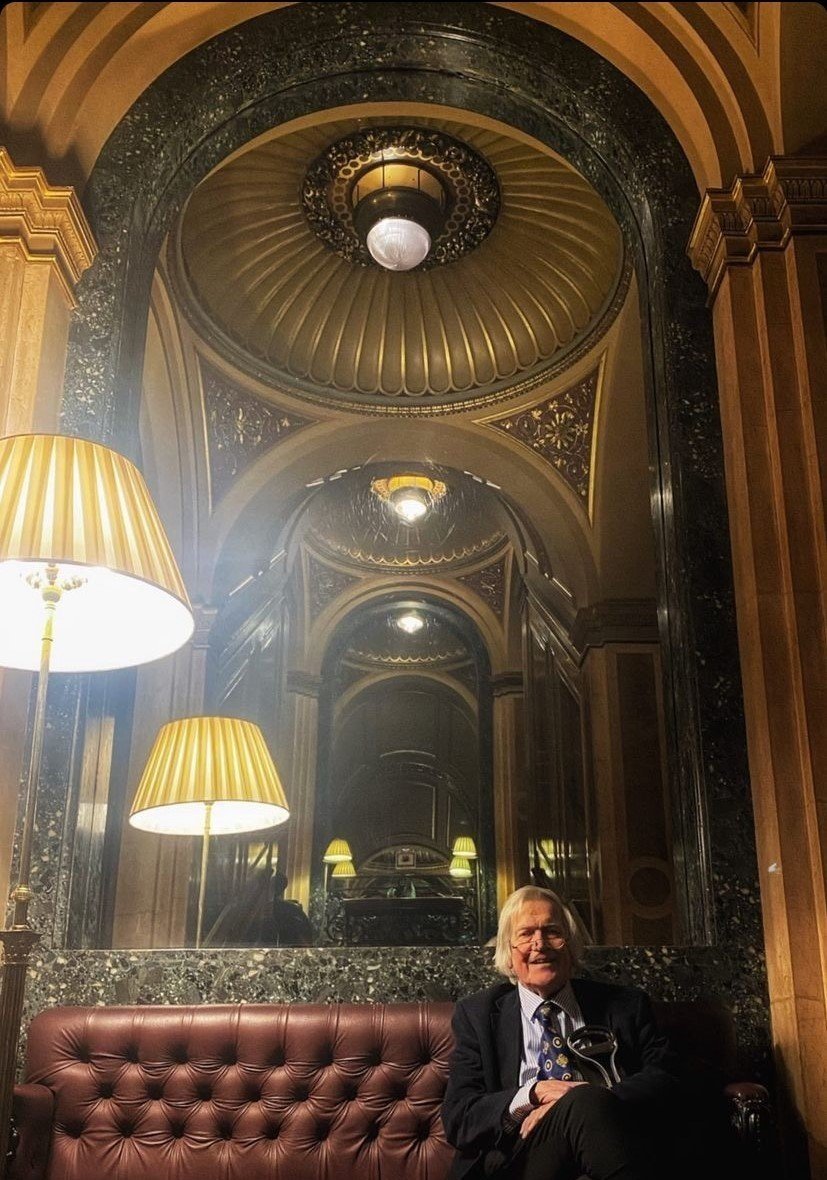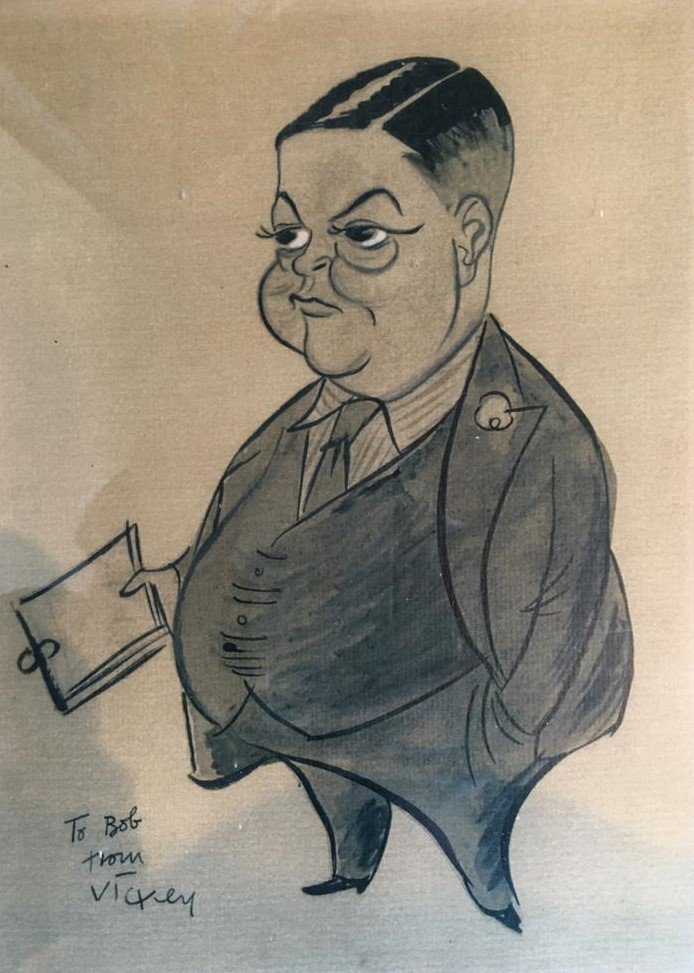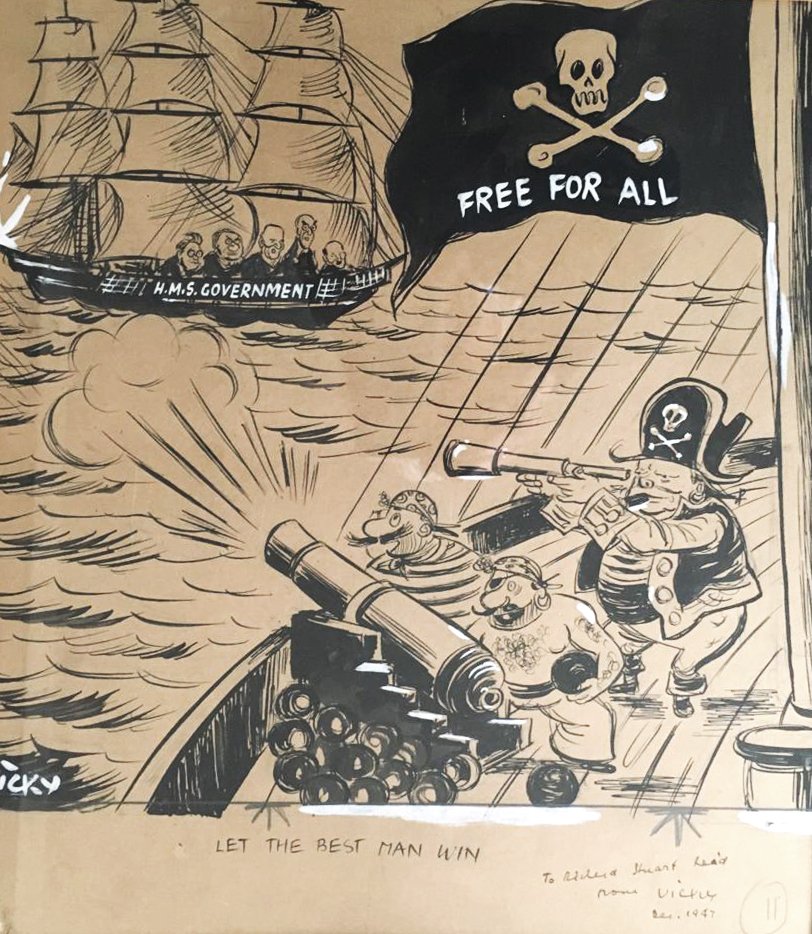My Introduction to Townscape
As a child I was always drawing (helped by my dyslexia) mostly cartoons and then, gradually buildings and trains in and around Sevenoaks where we moved to from Manchester where I was born. Up North in those days there were only electric trains unless you were heading London bound and these trains had all the smoke and the ‘‘shades’’ either side, at the front of the engine.
My father and his two brothers started off as journalists for The Yorkshire Observer (as it was then) and I had an uncle who was night editor of the Manchester Guardian. My father’s youngest brother, Eugene, retrained as an architect and later ran one of the housing divisions at the LCC in the 1950’s to 1960’s. Peter Aldington worked for my uncle in the LCC (1956-1963) My father was a War Correspondent seconded to work with the Americans under General Patton who was himself dyslexic as well as being “the last of the Great American Generals” and said to be the only American General the Germans feared.
After the war my Dad and his elder brother, Charles were both offered jobs at the News Chronicle by the Editor Gerald Barry – his elder brother Charles as the Music Critic (who became the expert witness for Liberace in his trial against Cassandra) and my father as Features Editor who worked closely with the Political cartoonist, a Berlin born Hungarian named Victor Weisz, known as Vicky. Vicky and my Dad, who was fluent in German and French, became good friends and Vicky, knowing my interest in drawing cartoons would occasionally send me some of his, including a lovely drawing he made of my father – cartoons which I have to this day. With such examples, I began to draw all the time and soon conquered my Dyslexia problems and ended up at Sevenoaks School being taught by one of the most brilliant of teachers I have ever had – Bob White and his wife, Prof. Lesley Millar becoming great family friends over the years as he taught both my wife, Thalia, and our elder daughter, Tamasin.
But like most of the building schools at this time (the 1950’s and 60’s) there were some extraordinarily talented architectural students, part-time as well as full time, such as David Mackay of Martorell, Bohigas and Mackay – Mackay graduated in 1958, qualified in Spain and then joined the practice established in 1951. Mike Wilford studied there in the 1950’s as did Mike Davies, a founding partner of Richard Rogers Partnership. Adrian Cave, the disabled access specialist believed, as Louis Helman pointed out “that architecture should serve people whatever their circumstances”. He studied at the Northern Polytechnic in the late 1950’s before transferring to the AA and last, but not least, Sam Webb, my old friend from 1957 celebrated for his investigation of the Ronan Point tower block structural collapse following a gas explosion in 1968. He drew beautifully too. The Swine! These guys were two to three years older than me and were my heroes. My father had two sisters, Aunt Louis, who sang regularly for the Carl Rosa Opera Company founded in 1873 by Carl Rosa, a German born musical impresario, to present opera in English in London and the British provinces and providing educational workshops and post show discussions. Her younger sister was a painter.
Click to view all blog images at larger size.
My Uncle Eugene painted such an attractive picture of Brixton School of Building and other such establishments such as Regent Street Polytechnic and the Northern Polytechnic that I believed they were the places for me because of their very “hands on” character. Gordon Cullen went to Regent Street Polytechnic. I started in Autumn 1957 but before I went too far, my friend, Ian McIver and I had signed on to do three evenings a week on the sculpture course at St. Martin’s and, as it turned out this school had some of the most talented sculptors teaching in the UK at this time – Elizabeth Frink, Eduardo Paolozzi, Anthony Caro, Philip King, Frank Martin, Bruce McClean Robert Clatworthy and Tim Scott, who had originally trained as an Architect at the AA, who said that the sculpture department became ‘‘the most famous in the world’’ the founding head was William Lethaby (1896 - 1912). After the evening class, Ian and I would often walk down towards Charing Cross, the station and what was then Charing Cross Hospital (now Coutts Bank) to a café on the corner of William IV Street where Stirling Moss owned a building on the corner (now a Post Office building). There was a café on the ground floor and an office for Stirling Moss above. He would often meet with Paolozzi after the evening classes and Ian McIver and I would occasionally join them for coffee and a lively conversation.
My first year out I spent working with David Rock at the London office of Grenfell Baines and Hargreaves, a Preston based office that would, by the end of this year (1960) become Building Design Partnership. Newton Watson, one of the tutors at the Northern (and later professor at the Bartlett) had studied with David Rock. David had opened the London office of Grenfell Baines and Hargreaves and he suggested I call David (who was a fantastic painter who was always generous with his time). The small office was based in Cavendish Street. David Rock, who became a huge influence on me, especially in drawing, took me on. There were six people in the office then, including myself and the Secretary. I was pretty ignorant about architecture and David was a great teacher. He had a passion still for drawing “townscapes” part of which rubbed off on me. His own paintings are fantastic, many of which I saw long after leaving BDP. I was twenty years old at the time, and pretty ignorant. And worse, I failed Art ‘‘A’’ level and no one fails Art A-level!
David Rock had studied with Professor Newton Watson (who became my teacher and, later, Professor at the Bartlet School) under Lord Holford and Peter Smithson who described David as “the most naturally gifted and talented architect he’s ever met”. He worked for Basil Spence from 1954 and then joined Grenfell Baines and Hargreaves in 1959. He won the Soane Medallion and then the Owen Jones Studentship (1959-60) and was elected President of the RIBA (1997-99) and was a supporter of Archigram through the 1960’s and 1970’s and nominated them for the RIBA Royal Gold Medal which they received in 2002.
My fellow student, Ian McIver (who had spent three years in the Navy on National Service) and I would go painting in and around London on those evenings we weren’t enrolled for sculpture classes at St Martins and we travelled together in those early years. He spent his earlier years after conscription in the Navy working for Yona Friedman in Paris, where we used to meet up over long weekends. Ian was a chain smoker and would leave the studio to have a smoke with another sculptor, the Swiss sculptor and painter Giacometti, whose work Ian and I both loved, and who had been living and working in Paris since 1922. One of the most important sculptors of the 20th Century, he was full of self doubts about his own works. I was on my way to Turkey and Israel in 1962 and had stopped off in Venice for a couple of weeks before climbing aboard the Orient Express to Istanbul when Giacometti was awarded the “Grand Prize for Sculpture” at the Venice Biennale that year.
It was an incredible time to be a young student and I had failed A Level art, but I was beginning to develop my own ideas about Townscape, however naïve, which I began to develop further working with two great friends, John Melvin and Jim Antoniou both great artists in the Planning Department of the Corporation of London in the 1960’s. Jim, who was Constantinos Doxiadis’ right hand man for a number of years and John, who has had several of his buildings listed. This was the period when the idea of the Pedway System (a network of new walkways and bridge connections at first floor level had been proposed by the Corporation of London, many still remaining to this day with several sections of this walkway being listed)! The similarity to the proposals of Yona Friedman that I had first seen with Ian in Paris were quite clear. But in copyright terms, the City of London model was “inspired” by Yona Friedman originals as opposed to having been designed by someone who merely “followed” in the same footsteps! But the planner, Bill Michael, the man behind this concept had had in mind the canals of Venice including the bridges crossing Route 11 (the dual carriageway). He’d certainly been inspired by Yona Friedman but what Venice had to do with it, God only knows. This was an era when architects made such strange claims to the origins of their ideas such as Ken Capon of ACP who referred to the Towers of Essex University as being a reference to the vastly thinner towers of San Gimignano! But even Yona Friedman’s ideas at this time were crackpot, but Ian enjoyed working with him, and I enjoyed my trips to see Ian!
The view of Chevening Church is a reminder of when I used to read the lesson in Church before Earl Stanhope had read his. We were both regular readers through the late 1940’s and early 1950’s. Leaving the Church he would turn to me, tap me on the head and say ‘’well done Dickie!’’. before walking back through Chevening Estate village to Chevening Place, reputedly by Inigo Jones (1617-1717) and restored by Donald Insall in the 1970’s (who also has some of my travel paintings - presents for giving several lectures to my students for which the school could not pay him). He knew so much about conservation, but over lunch at the Reform Club one day he said that Alan Read, the head of the Architecture School at Brixton School of Building knew far more, and clearly admired him as I did. It was Alan who made it possible for me to take unpaid leave to teach the odd semester at the University of Virginia in the 1970’s and 1980’s. I couldn’t thank him enough for his enthusiastic support.
















